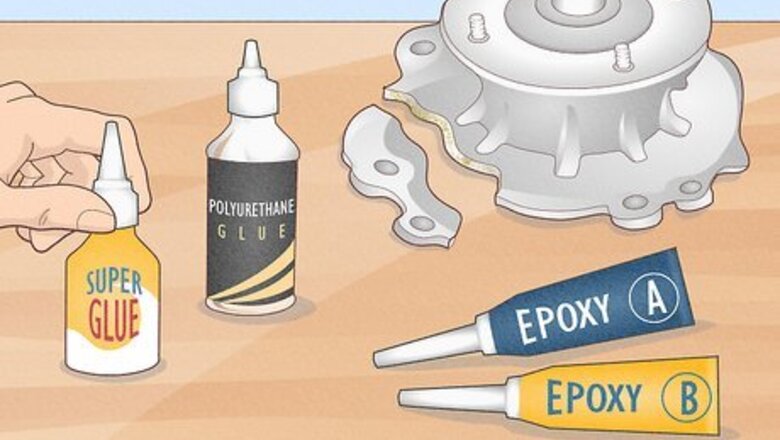
views
- Choose epoxy, polyurethane, or super glue. Consider the strength you need, drying time, and the size of gaps between the metal pieces.
- Thoroughly clean and lightly sand both metal pieces before applying glue. Afterwards, clamp the pieces together for 1-2 hours to set.
- Wait 24 hours for the adhesive to cure fully—afterwards, your metal is fully bonded and ready for use.
Select an adhesive based on your metal needs.

Epoxy, polyurethane, and super glues are strong, popular metal glues. They’re all strong, durable, and easy to apply, but have different advantages. Consider your time frame, weight of the metal, and whether the metal will be inside or outside while glue shopping: Choose epoxy if you need maximum strength. It’s the strongest of the three and can fill in gaps if pieces don’t fit perfectly together. It comes in flexible or non-flexible varieties and is heat- and impact-resistant. Use polyurethane for moderate household repairs. It’s slightly weaker than epoxy but is easier to apply. Choose it for outdoor projects since it’s resistant to heat, UV, and water. Opt for super glue to bond small pieces together very quickly. It’s best for spot gluing flat surfaces together. It does not fill in gaps, so the metal pieces must fit together perfectly.
Protect your skin and lungs from adhesive fumes.

Wear latex or nitrile gloves and work in a well-ventilated space. Nitrile is more resistant to chemicals in epoxy or polyurethane adhesives than cotton, nylon, or PVC gloves. Set up your materials in an open garage, an outdoor space, or a well-ventilated interior room to avoid inhaling adhesive vapors. Consider wearing a mask and goggles to keep fumes and adhesive out of your mouth, nose, and eyes. Lay down a protective cloth or paper to shield your work surface, too. Gloves also protect the metal from the oils and greases on your fingers.
Clean both metal surfaces.
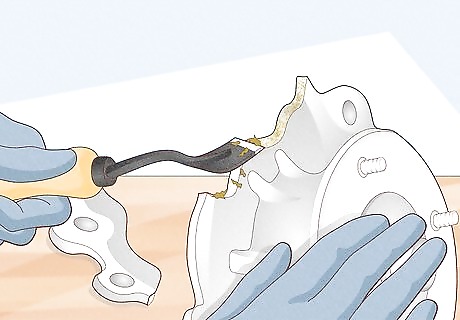
Metal glues stick stronger and longer to clean, debris-free surfaces. First, use a scraper or sanding tool to remove rust, paint, or corrosion—be forceful enough to scrape off debris without damaging the metal. Then wet a clean cloth with degreaser and wipe both surfaces to remove dirt and residue. Keep your gloves on to avoid leaving grease or fingerprints on your freshly cleaned metal. Remove stubborn adhesives from metal with a strong solvent like acetone.
Sand both surfaces with fine-grit sandpaper.
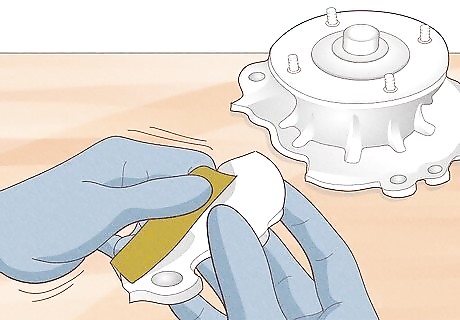
Sanding the metal roughs up the surface, which helps the glue stick. Use 150- to 220-grit sandpaper or a sanding block on both pieces of metal in the spots to be glued. Make sure the metal is thoroughly cleaned first, since sanding over dirt can scratch metal and impair the stickiness of the glue. Wipe the metal with a clean rag or microfiber cloth afterward to remove any sanding dust or debris. After sanding, double check the fit of the metal pieces. If they no longer fit very closely, be sure to use an epoxy glue to fill in the gap.
Apply epoxy resin to both pieces.

Combine equal parts adhesive and hardener immediately before gluing. Squeeze both chemicals into a disposable plastic cup or onto a coffee can lid and mix together with a popsicle stick. Make sure they’re thoroughly blended and apply the mixture to both metal surfaces. Make sure the metal is clean and sanded before you mix the epoxy. It will harden within minutes, so apply it to the metal as soon as it’s mixed. Some epoxies come in a dual-chamber syringe that mixes the hardener and adhesive while you squeeze it onto the metal.
Brush polyurethane glue onto one surface.
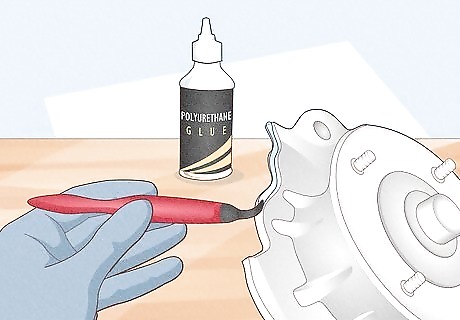
Use a glue brush to apply a thick, even coating. Try not to apply so much that it will leak out when the pieces are pushed together for easier cleanup. Apply polyurethane glue to spots that fit very closely together since it does not fill gaps as well as epoxy.
Put super glue on one of the surfaces.

Squeeze super glue dots onto one metal piece directly from the tube. This is the fastest and easiest adhesive to apply. Add about 1 dot of super glue per square inch of surface. Make sure the pieces fit together perfectly, otherwise the super glue’s bond won’t reach its maximum strength.
Clamp the metal pieces together.
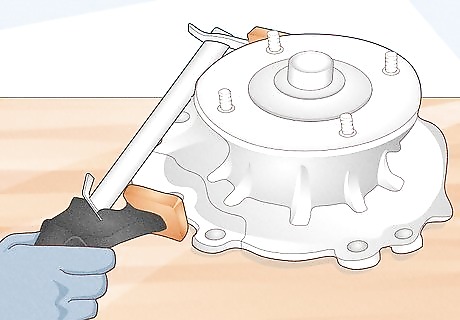
Clamps ensure the pieces won’t come apart while the adhesive sets. First, firmly press your metal pieces together for about a minute to bond them. Once the initial connection is formed, apply clamps or set a weight on top of epoxy- or polyurethane-glued metal for 1 to 2 hours. Hold super glued metal together with clamps or your fingers for about 1 minute to set. Make sure to rest the pieces in a place where they won’t be disturbed or moved. Use a rag moistened with acetone or mineral spirits to wipe away runs or globs of glue that get squeezed out from between the pieces.
Wait 24 hours for the glue to completely cure.
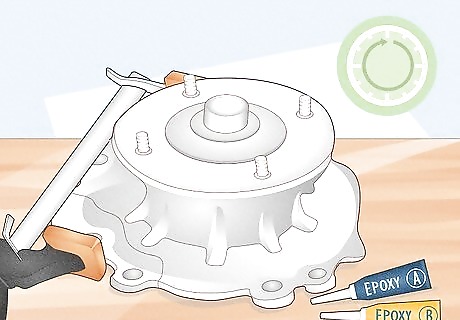
Leave your metal in a dry spot while the glue hardens. Epoxy adhesives take the longest to cure and need a full 24 hours before the metal can be used. Polyurethane glues may cure faster, but should be left for 24 hours to be safe. Let super glued pieces dry overnight at minimum. When in doubt, leave your metal to cure longer. If you spot a run of glue that dried on the outside of your metal, scrape or slice it off with a razor blade. After curing, the adhesive is at full strength and your metal is ready to be used or displayed again.
















Comments
0 comment